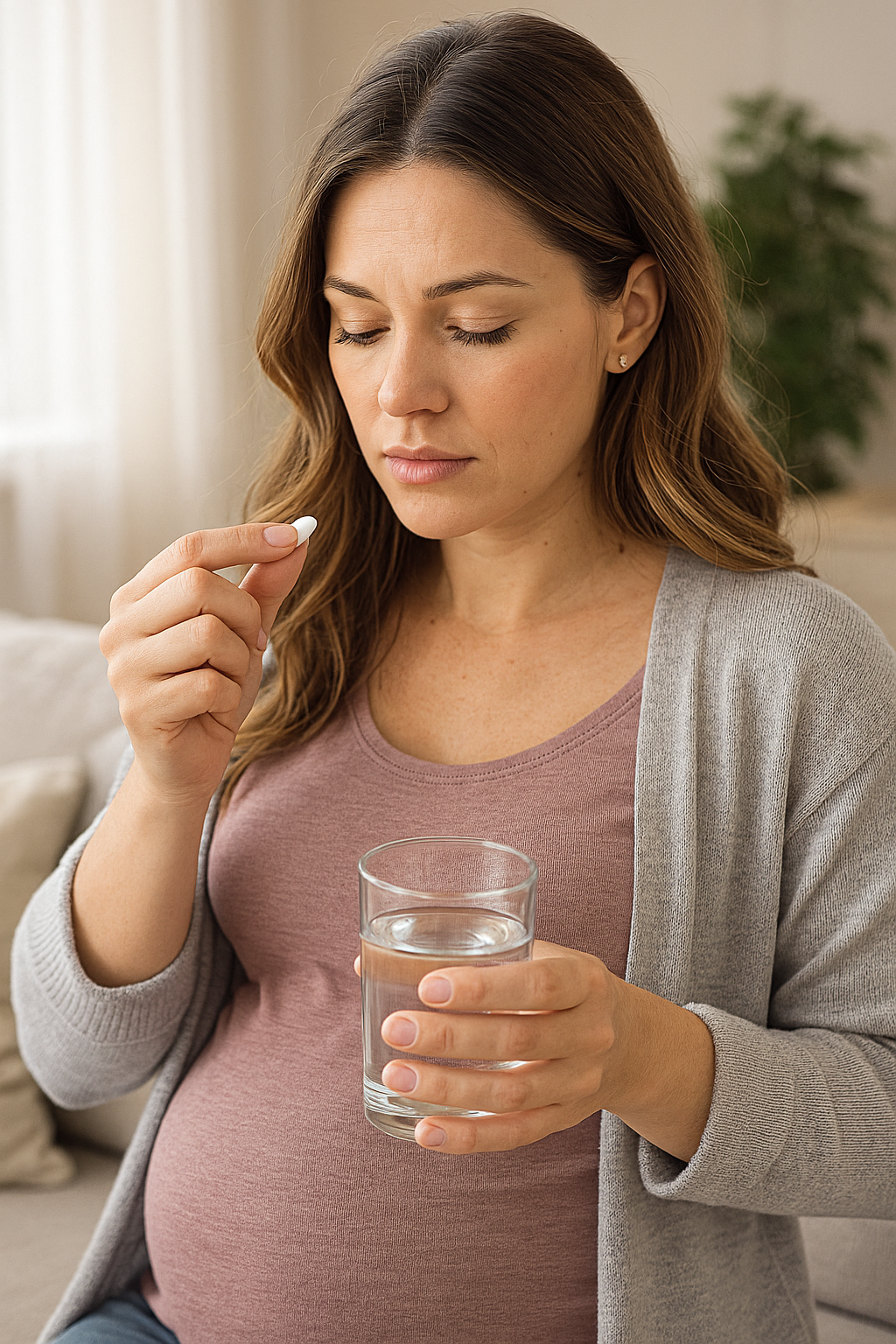
Paracetamol in pregnancy—what’s the risk picture, and could red light therapy be an alternative for everyday aches?
Pregnancy is full of paradoxes: you’re asked to rest but keep moving; to “take something for the pain,” but also to be cautious with medicines. One question that comes up again and again among mums is whether paracetamol (acetaminophen) is truly risk-free in pregnancy—and if there are non-drug ways to cope with the day-to-day aches.
What mums are worried about
Mothers often say they want to avoid “anything unnecessary,” especially in the first and third trimesters. They’re not just talking about severe pain; they’re talking about nagging back aches, rib and hip soreness, sleep-disrupting pelvic pain, headaches, and the general tenderness that can follow a long day on your feet. Many want a comfort option they can try before reaching for pills—particularly if they’re also managing nausea or heartburn.
What the latest evidence says about paracetamol & neurodevelopment
Here's the current research in a nutshell:
-
Signals exist but aren’t definitive. A 2021 international consensus urged a precautionary approach (use the lowest effective dose for the shortest time) because some observational studies had reported associations with autism/ADHD. Association isn’t causation, but it’s why people still ask questions. SpringerLink
-
The biggest, most rigorous analysis to date did not find a causal link. A 2024 NIH-funded study in JAMA following about 2.5 million Swedish births—including sibling comparisons to control for family factors—reported no increased risk of autism, ADHD, or intellectual disability from prenatal paracetamol exposure. JAMA Network+1
-
Regulators and health agencies (2024–2025) haven’t changed guidance. The EMA says paracetamol remains an important option in pregnancy when clinically needed, and WHO calls the alleged link to autism inconsistent. UK/NHS-aligned updates in Sept 2025 echo the same. European Medicines Agency (EMA)+2Reuters+2
Takeaway: If you need paracetamol for fever or significant pain in pregnancy, current guidance still supports its use as directed. But if your goal is to reduce pill-taking for everyday aches, it’s reasonable to build a non-drug toolkit, like red light therapy.
A pill-free option to consider: red & near-infrared light therapy (PBM)
Photobiomodulation (PBM) uses red and near-infrared (NIR) light to nudge mitochondria (via cytochrome-c oxidase) and calm inflammatory signalling. The “optical window” between roughly 650–1,060+ nm lets light penetrate deeper into soft tissues than most visible wavelengths. That’s why PBM is explored for musculoskeletal soreness and tenderness.
Where PBM might fit during pregnancy
-
Everyday back/hip/rib ache: Short, comfortable sessions to the lower back and flanks can be used as an adjunct to physio advice, posture changes, and rest. Evidence for back pain across populations is mixed, but many users report short-term comfort.
-
General soreness after busy days: The anti-inflammatory/analgesic effects of PBM are the reason athletes and chronic-pain patients use it as a non-drug comfort add-on.
Safety-first notes:
• Avoid shining directly over the abdomen during pregnancy (a common precaution due to limited pregnancy-specific data).
• Don’t use PBM to delay seeking help for fever, severe pain, or concerning symptoms—speak to your midwife/GP.
How London Light Therapy can help (non-drug, non-invasive)
Our full-body panels are designed to deliver red + NIR wavelengths (e.g., in the ~680–1,060 nm range) so you can target larger areas like the lower back, flanks, chest/upper body comfortably and hands-free. Practical tips mums like:
-
Short & often: Start with 10–15 minutes per treated area, a few times per week, at a comfortable distance.
-
Session timing: Many prefer early evening to unwind and support sleep comfort.
-
Positioning: Semi-reclined or side-lying, with the panel in front of the area that feels tight or sore.
Bottom line: The best plan is layered: posture/physio advice + heat/cold + gentle movement + PBM for comfort—reserving paracetamol for the times it’s truly needed.
References (links)
-
JAMA 2024 Swedish sibling study (≈2.5M births): no causal link found. JAMA Network+1
-
EMA (Sept 2025): “Use of paracetamol during pregnancy unchanged in EU.” European Medicines Agency (EMA)
-
WHO (Sept 2025): evidence on autism link inconsistent. Reuters
-
2021 precautionary consensus on acetaminophen in pregnancy. SpringerLink
-
PBM mechanisms via cytochrome-c oxidase. MIMH Training
-
Optical/near-infrared “therapeutic window” & deeper penetration. SPIE Digital Library+1